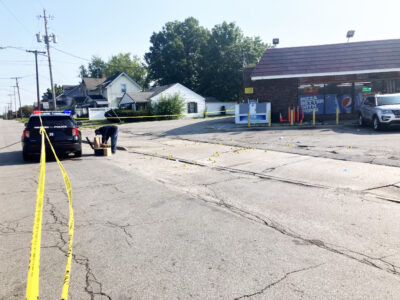Our Heritage: William D. Packard describes challenges of the Warren years
EDITOR’S NOTE: This is part of a weekly series on our region’s history coordinated by the Trumbull County Historical Society.
More than 400 Packard automobiles were built in Warren from 1899 until 1903, when the car company moved to Detroit.
Nearly two decades after the move, William Doud Packard described the challenges the company encountered during its Warren years to Walter D. Hackett, who served as his private secretary from 1919 until 1921.
“Our early troubles were almost entirely with materials rather than design. It was utterly impossible to get materials that would stand up under the needs that we already recognized at that time. Although the early designs were crude, the early difficulties were almost largely due to defective materials. There were continual breakages.”
“We soon began making our own materials because we would not get the quality we demanded. I remember one trip when I spent two weeks on the road looking for iron with which to make frames before I found any that could be used, and even that was not satisfactory. On several occasions we rejected so many of the parts which we bought from manufacturers that we got into trouble on production. For example, the people from whom we were buying our wheels refused to make any more for us because we rejected so many of them. We had trouble with our bearings. For our gears, the only steel we could find that would do was made for armor piercing shells for the Navy. We got some of these forgings made for shells to make gear blanks because the best that we could get from commercial sources was not good enough for us. Shell steel was also used for our cylinders.
“Another trouble which involved both design and materials came when we put a governor on our spark. We were afraid to let the engine run too fast and so had the spark stopped at what we thought was a safe point. One of our car owners learned that he could move the governor and after he did so, ran circles around everybody else in town for some time. Finally, he speeded it a little too fast and the fly wheel blew up, making a very nasty wreck.
“Another of the early troubles in design had to do with the likelihood that the wheels would turn whenever they hit a bump. The construction was such, that if one wheel was elevated much beyond the other, the whole car would swing toward the lower side. There was a constant stream of cars running into the ditch or trying to climb telephone poles as a result. We finally put in a special radius link which largely prevented this.
“You must remember that one of the things that the automobile designers of those days had to contend with was the awful condition of the roads. Good roads were practically unknown even in the summertime and pioneer cars were tried out under conditions that would play havoc with many of the modern automobiles; particularly when the roads were wet, it was almost impossible to get traction. I should say that the invention of the Weed tire chain, making it possible to drive cars on slippery roads, was almost as important an invention in the manufacture of automobiles as the invention of the electric starter. The tire chain, for the first time, made automobile driving practicable in all kinds of weather.
“Another serious difficulty was with tires. It was many years before tires were able to stand the work. In those days, with the best possible tires, a life of two or three thousand miles was exceptional. We were constantly changing tires in spite of the fact that in order to keep them running we filled them with dope of various kinds to stop the holes. One such dope was composed of glue and chicken feathers in a double- walled inner tube. This stopped a small hole, but if there happened to be a bad cut, you would get a shower of this awful concoction and would come in with yourself and your car looking as if you had been tarred and feathered.”

